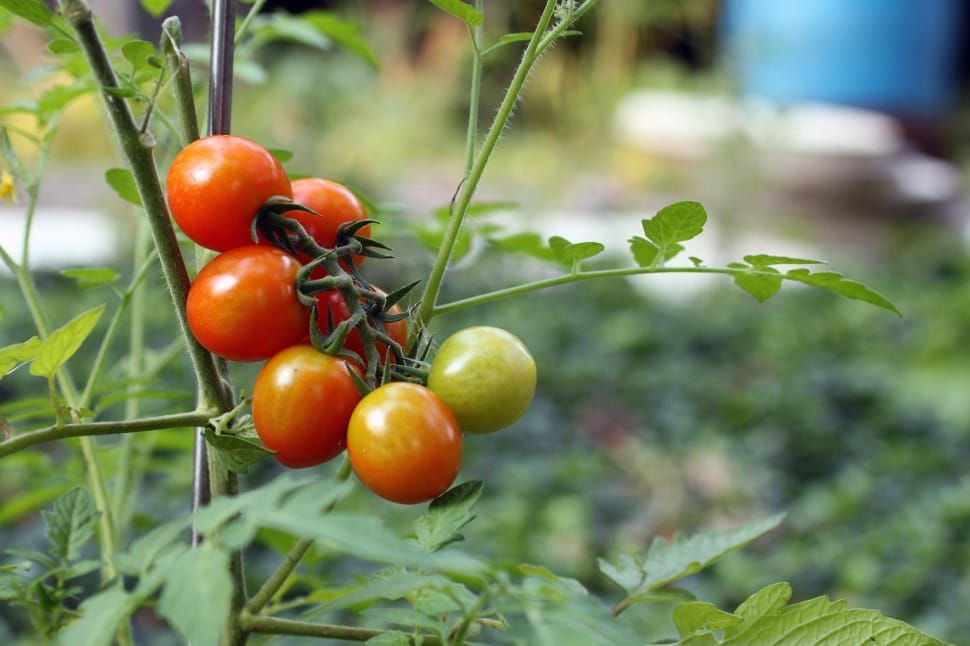Tomatoes are a staple in many gardens, thanks to their versatility and deliciousness. However, as with any plant, ensuring that they receive the proper amount of water is crucial for healthy growth. Overwatering tomato plants can lead to various issues and severely impact the quality and yield of your crop. This article will cover the signs of overwatering, the dangers it poses, and how to deal with the issue.
Recognizing the Signs of Overwatering
Below are some visible indications that your tomato plants may be receiving too much water:

Image Source: express.co.uk
Yellowing Leaves
One of the most telling signs of overwatering in tomato plants is leaves turning yellow, especially the older, lower ones. The excess water may disrupt the plant’s root function, inhibiting the absorption of necessary nutrients and leading to this yellowing.
Wilting
While under-watering can cause wilting, the same is true for over-watering. When tomato plants receive too much water, their roots may suffer from oxygen deprivation, which can cause the plant to wilt despite the wet soil.
Root Rot
Overly saturated soil for prolonged periods can lead to the development of root rot. This fungal disease causes roots to turn black, becoming soft and mushy, which ultimately affects the plant’s ability to uptake water and nutrients.
Cracked Fruit
When tomato plants absorb excessive water, the fruits can swell and crack under pressure. Some mild cracking is normal, but excessive or deep cracking is often a sign of overwatering.
Blossom End Rot
Overwatering can lead to a calcium deficiency in plants, and one common result of this imbalance in tomatoes is Blossom End Rot, a disease characterized by black, sunken areas at the blossom end of the fruit. While other factors can cause Blossom End Rot, overwatering is a common offender.
Edema
As a result of overwatering, tomato plants may develop edema, a condition where plant cells fill with excessive water, causing them to burst and create small blisters on leaves or fruits.
The Dangers of Overwatering Tomato Plants
These issues stemming from overwatering can lead to significant consequences, such as:
- Stunted growth and reduced fruit production
- An increased likelihood of diseases due to weakened immunity
- A reduction in overall fruit quality
How to Prevent and Address Overwatering
To ensure your tomato plants receive the proper amount of water and avoid overwatering, follow these tips:
Watering Schedule
Water your tomato plants deeply but infrequently, aiming for 1-2 inches per week. Adjust your watering based on rainfall and fluctuations in temperature, as hotter days may require more frequent watering.
Soil Test
Make sure your soil drains well. Perform a soil test to determine the ratio of sand, silt, and clay. Amend poorly draining soil with organic matter such as compost or aged manure.
Mulching
Apply a layer of organic mulch 2-3 inches thick around your tomato plants. Mulch can help stabilize soil moisture levels, preventing both over and under-watering.
Container Watering
If you’re growing tomatoes in containers, ensure they have proper drainage holes. Be careful not to overwater, as container plants are more susceptible to root rot due to restricted space.
Monitor Condition
Keep a close eye on your plants’ overall condition, including their leaves, fruits, and growth. This constant vigilance will help detect signs of overwatering quickly, enabling faster intervention.
Conclusion
Overwatering your tomato plants can be detrimental to their health and productivity. By recognizing the signs of overwatering and following the above tips, you can keep your plants healthy and thriving, ultimately enjoying a bountiful harvest of delicious tomatoes. Remember, consistency and attention to detail are crucial for healthy tomato plants, so keep learning and refining your practices as you grow.


Leave a Reply